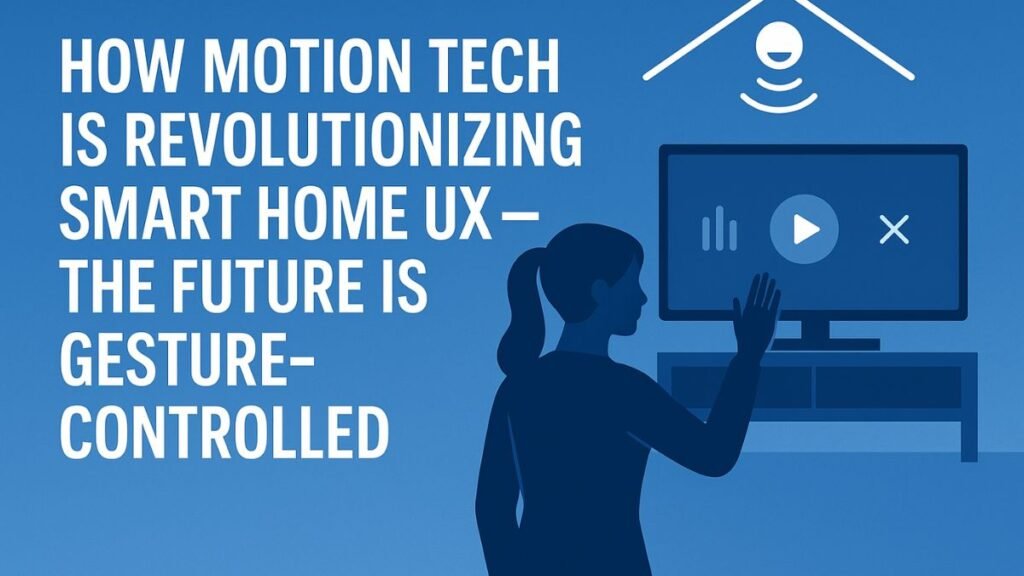Smart home technology has come a long way in recent years. What began as simple remote-controlled lights and timers has grown into complex ecosystems powered by voice commands, AI and automation.
One of the most exciting developments in this space is the integration of motion technology into smart home user experiences (UX). Instead of needing to touch a screen or speak a command, users can now interact with their homes simply by moving through them.
The Science Behind Motion in Smart Homes
Motion technology in smart homes typically relies on a combination of sensors and software. However, the underlying principle of detecting movement has long been implemented in mechanical systems. Some hybrid smart home components — certain window or door sensors, for example — still use mechanical components. These parts are often a type of spring-loaded device, a compact component commonly used in workholding applications to precisely position, index, or lock a workpiece in place. By applying consistent force, they can reliably detect position changes and ensure repeatable motion control in these sensors.
Today, passive infrared sensors detect heat emitted by humans and animals, triggering actions like turning on lights. More advanced systems use radar or ultrasonic sensors for finer-grained motion detection. Gesture recognition, often enabled by cameras or specialized devices, can detect specific hand or body movements to initiate a task, such as waving to close curtains.
Behind the scenes, AI and machine learning analyze motion patterns to understand context and intent. Over time, the system learns a user’s routines and preferences, enabling clever automation. For example, if it notices you walk into the kitchen every morning around 7 a.m., it can start the coffee machine and adjust the lighting automatically.
Motion tech is already being used to trigger smart lighting when someone enters a room or to alert homeowners of unexpected movement for security purposes. It can also regulate temperature by distinguishing between occupied and unoccupied rooms in the home.
Key Benefits of Motion-Enhanced UX
One of the main advantages of motion-based UX in smart homes is how natural and effortless it feels. There’s no need to search for a phone, press buttons or issue voice commands. Entering a room can be enough to light it up, or a simple gesture can control your TV. It makes interactions almost invisible yet highly effective.
This has major advantages for accessibility. For older users or those with limited mobility, motion-activated systems reduce the need for physical interaction with devices. Motion sensor lights that turn on automatically reduce the risk of falls in dark spaces, while gesture controls can be easier than using touch screens for people with arthritis or other conditions.
Another benefit is personalization. Systems learn and adapt to individual behaviors, so homes can respond in ways that feel tailored to the user. Some systems even distinguish between household members to deliver unique responses — for example, setting the temperature to your preference when you walk into a room.
Examples include Google Nest Hub’s Quick Gestures feature, which allows users to control media playback, alarms and timers with hand movements. Philips Hue uses motion sensors to turn lights on and off as your family moves around the home, while newer smart TVs allow hand gestures to navigate menus.
Challenges of Using Motion in Smart Home UX
Despite its many advantages, motion-based smart home UX isn’t without challenges. Key concerns include:
- Privacy: Users must be confident that their data is secure and not being accessed by third parties, especially when cameras are involved. Brands must prioritize transparency and data protection.
- False positives and negatives: A pet might trigger a motion sensor unnecessarily, or the system might fail to detect subtle human movement, resulting in frustration. In particular, gesture recognition tech is still unreliable in crowded rooms or low light.
- Learning curve: Unlike touch gestures such as swipe and tap that people have been using for decades, gesture-based user interface (UI) is not standardized. Until it is, users will have to learn the right gestures for their particular smart home UX.
Designing for the Next Generation of Smart Homes
Motion is undoubtedly playing a growing role in shaping future smart home experiences. While there are still hurdles to address, this tech’s ability to deliver intuitive, personalized and accessible interactions is undeniable. As technology continues to improve, expect motion to become a central part of how you live in and interact with your home.


